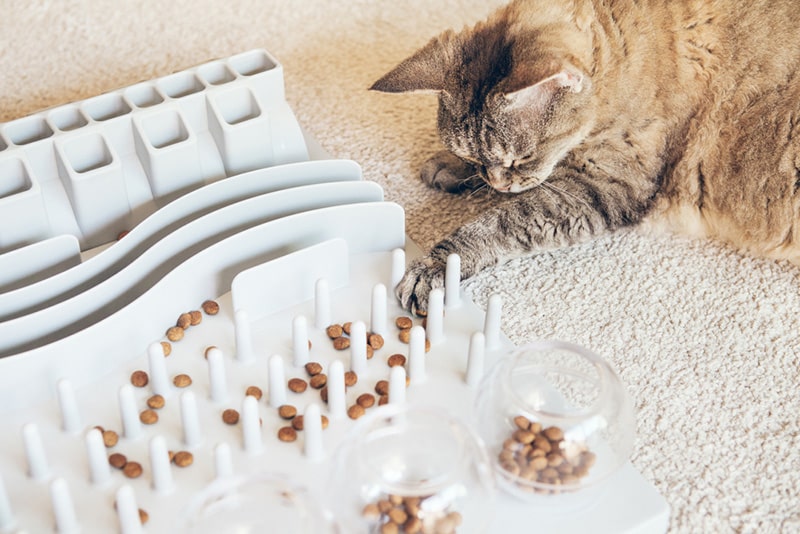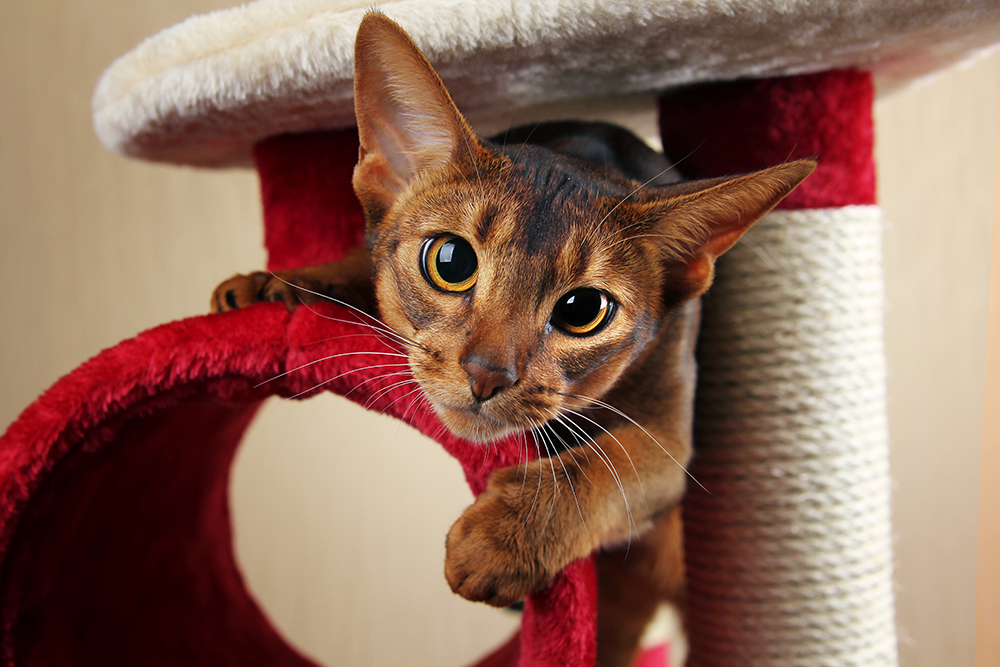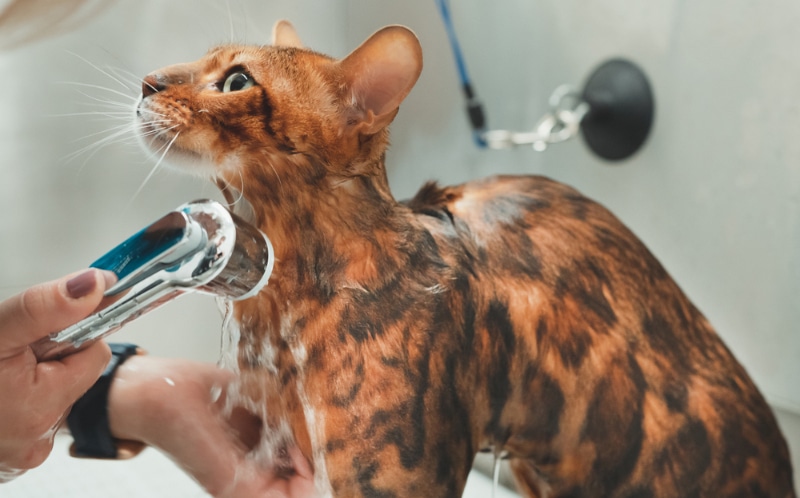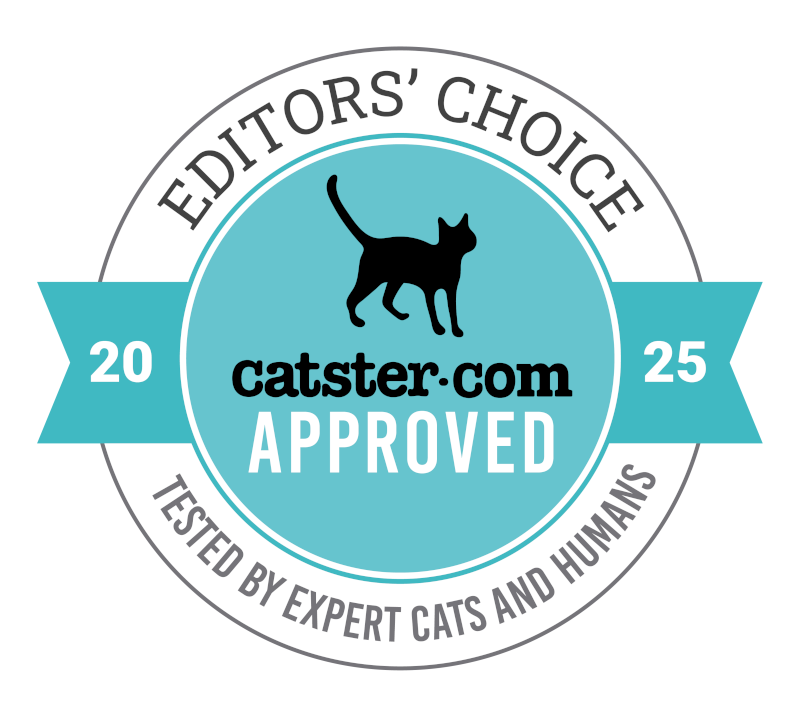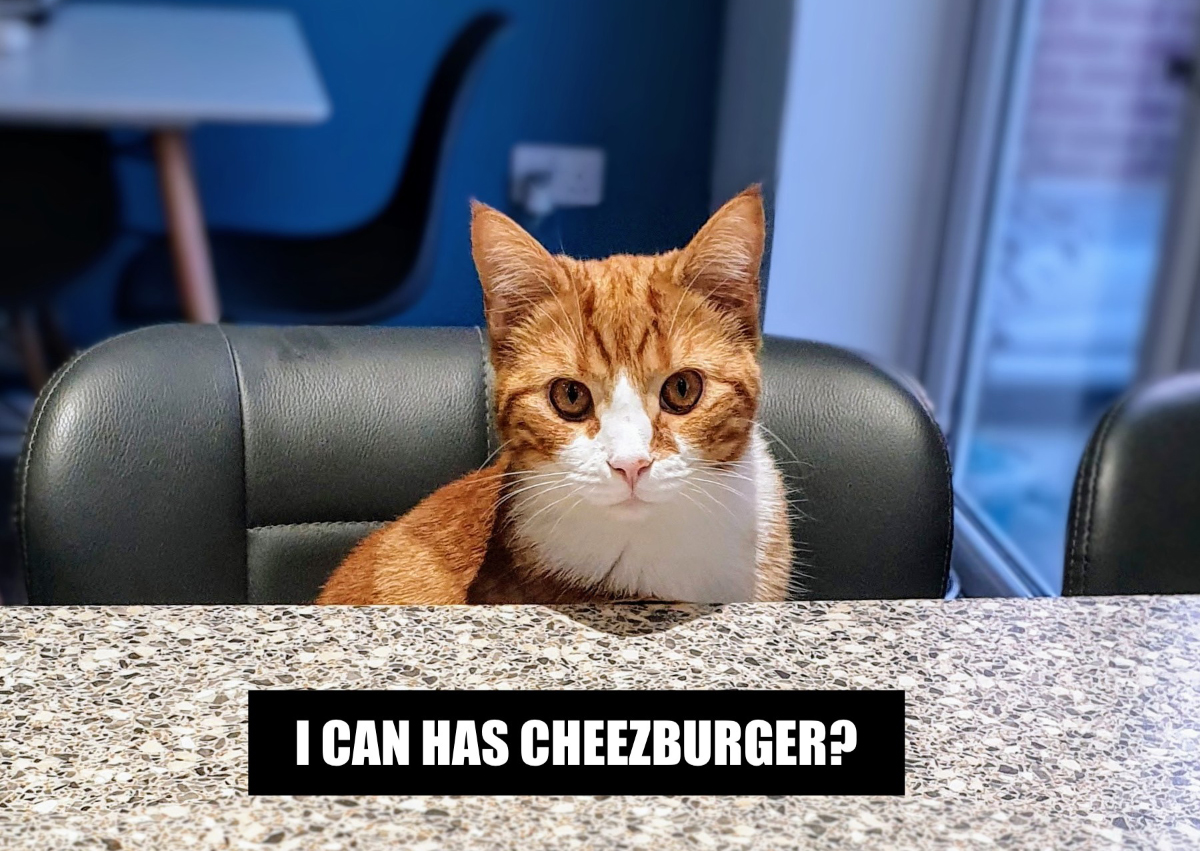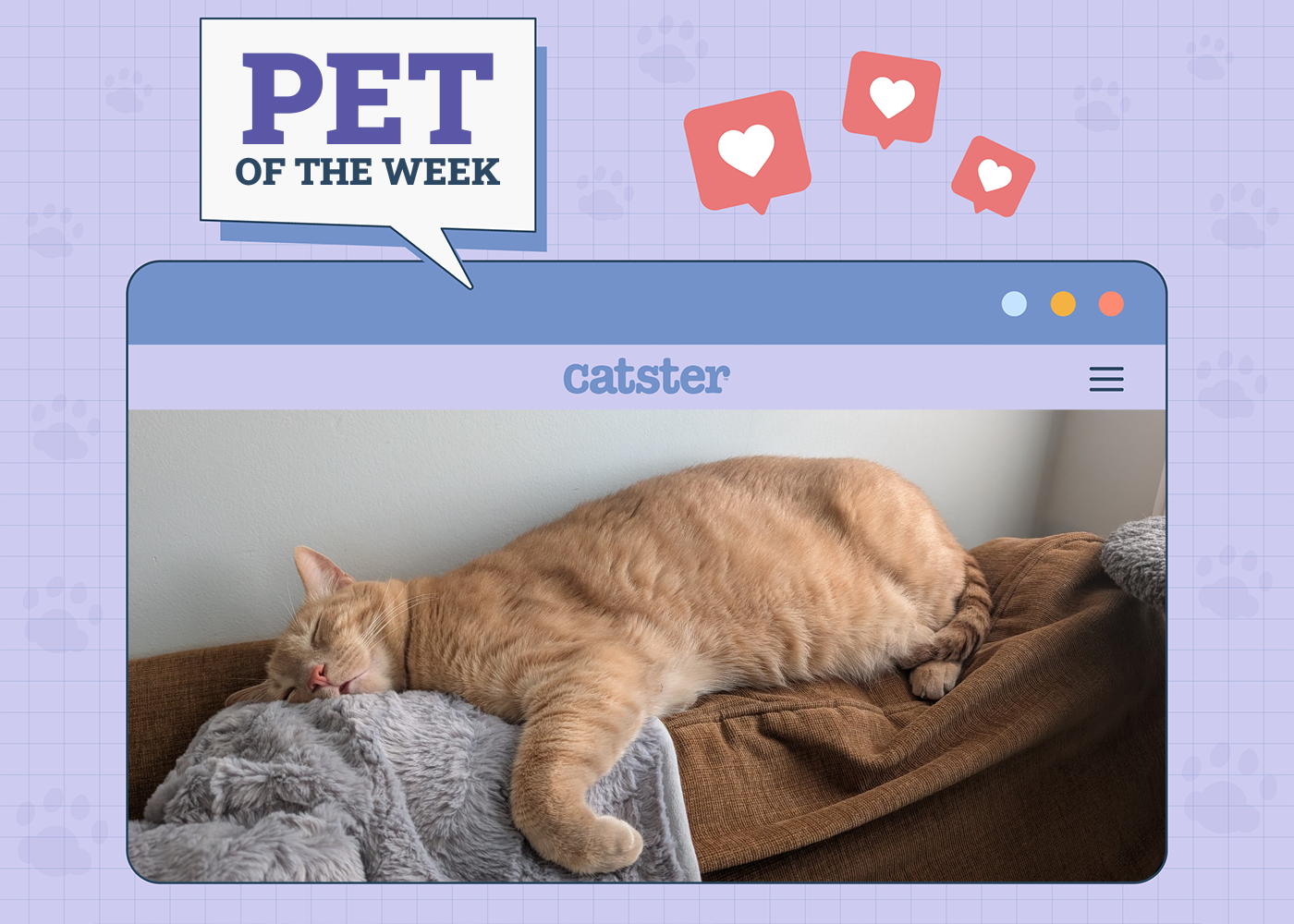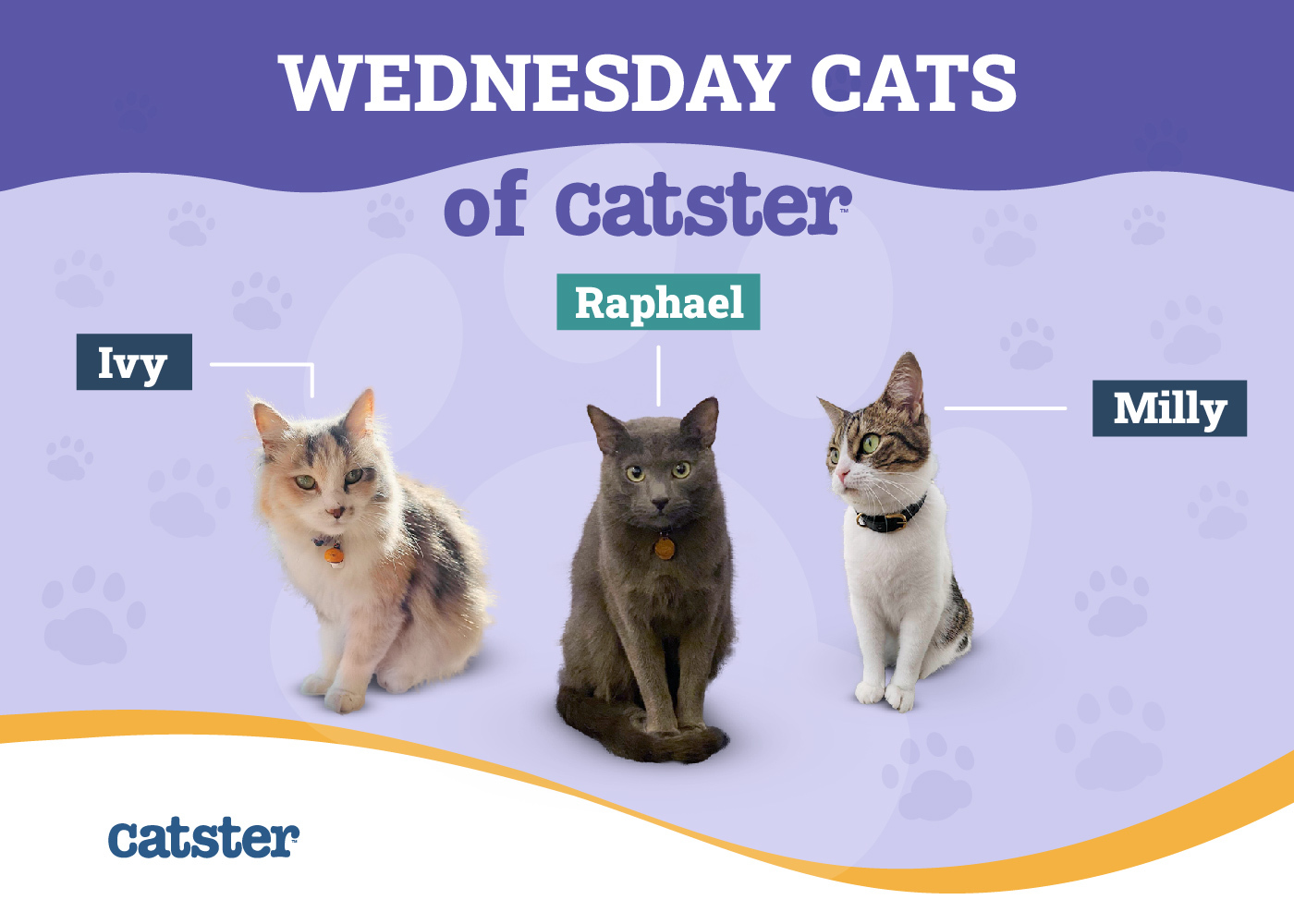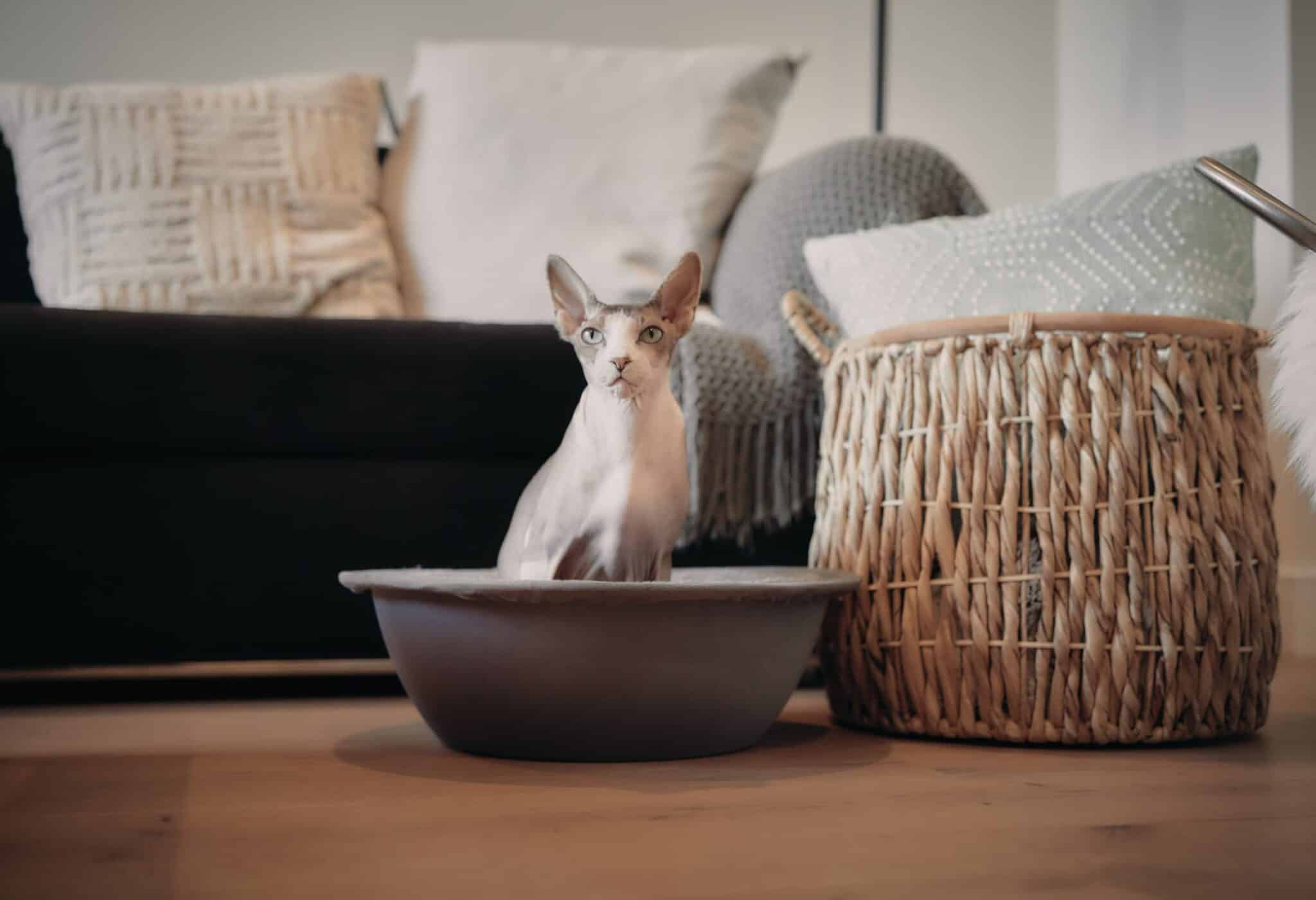 Cats take legendary naps. As crepuscular creatures, they’re likely to “cat nap” through most of the day and then become active around the time the crickets start to sing. They spend anywhere from 12 to 16 hours a day dozing off, so it’s important to supply them with a cozy bed. Cats crave comfortable, plush places where they feel secure, but the exact location where they sleep varies depending on their personality. For example, some prefer a windowsill perch, while others feel the safest when they’re tucked away in a cave. Our reviews of the best cat beds this year reflect these varying preferences cats have for their favorite relaxing spot to help you find the right fit for your special feline.
Cats take legendary naps. As crepuscular creatures, they’re likely to “cat nap” through most of the day and then become active around the time the crickets start to sing. They spend anywhere from 12 to 16 hours a day dozing off, so it’s important to supply them with a cozy bed. Cats crave comfortable, plush places where they feel secure, but the exact location where they sleep varies depending on their personality. For example, some prefer a windowsill perch, while others feel the safest when they’re tucked away in a cave. Our reviews of the best cat beds this year reflect these varying preferences cats have for their favorite relaxing spot to help you find the right fit for your special feline.

A Quick Look at Our Favorites in 2025
| Image | Product | Details | ||
|---|---|---|---|---|
| Best Overall |
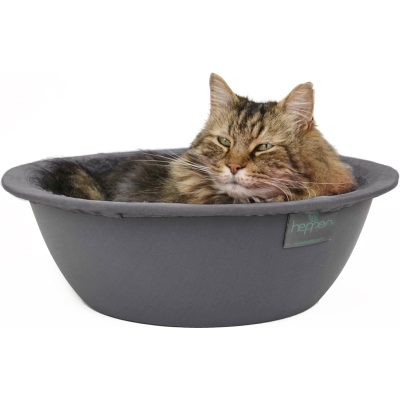
|
Hepper Cat Nest Bed |
|
CHECK PRICE |
| Budget Buy |
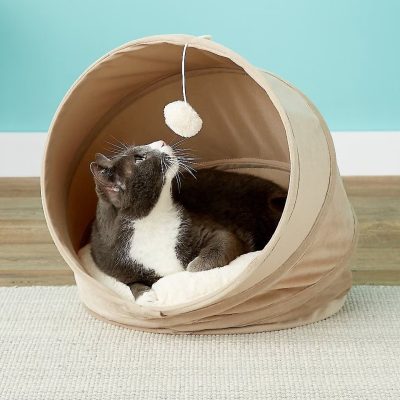
|
Frisco Foldable Cat Bed |
|
CHECK PRICE |
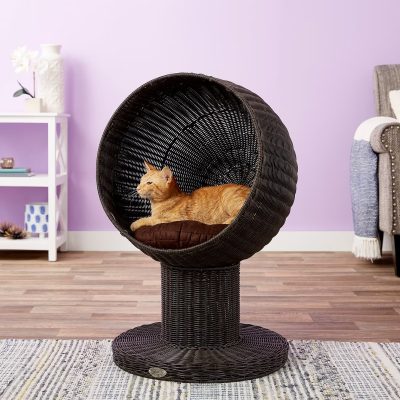
|
The Refined Feline Kitty Ball |
|
CHECK PRICE | |
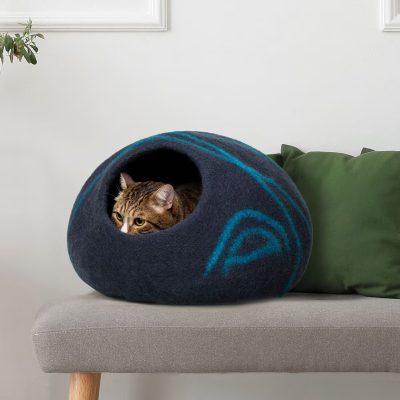
|
Meowfia Felt Cat Cave |
|
CHECK PRICE | |
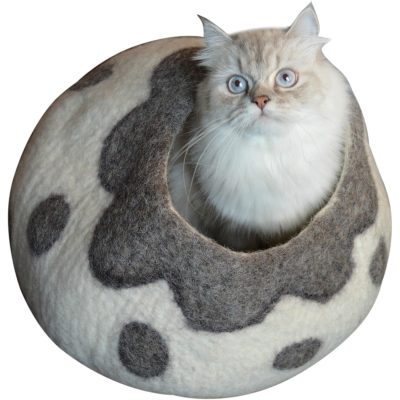
|
Earthtone Cozy Wool Cat Bed |
|
CHECK PRICE |
The 10 Best Cat Beds
1. Hepper Nest Cat Bed – Best Overall
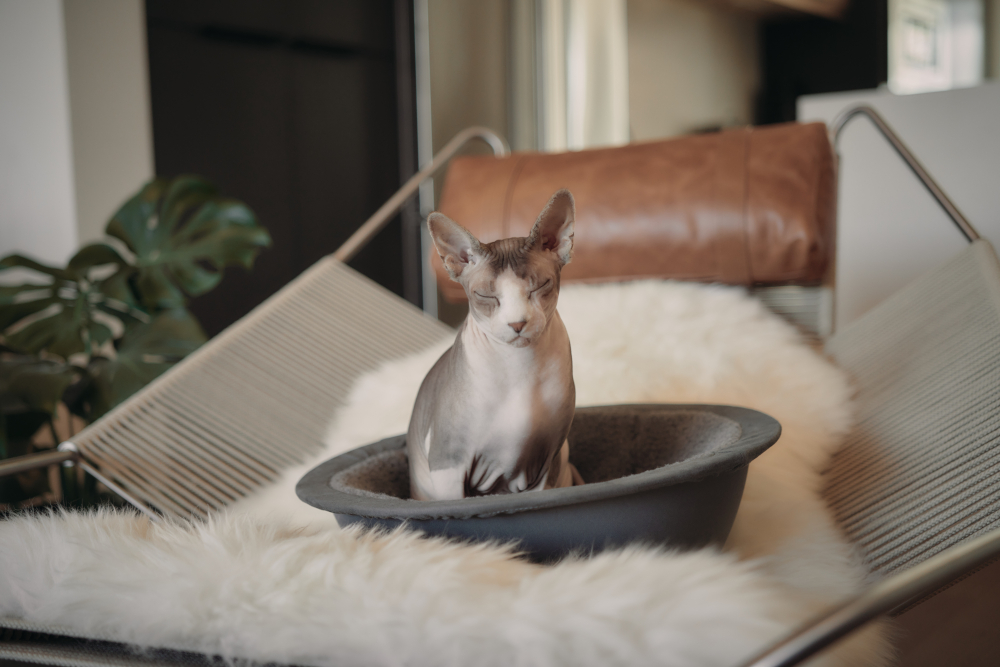
If you are looking for a cat bed that won’t hold on to cat hair or odors, is self-warming, and looks great next to your floor plant, this is a great option to consider. Combining ease, comfort, and luxury, the Hepper Nest Cat Bed provides cats with a chic yet sturdy place to nap. It also provides owners with a piece of cat furniture that seamlessly blends with most decor.
The unique bowl design offers the right amount of support that can be enjoyed by cats of all ages. Featuring a removable sherpa liner, this best modern cat bed is one of the easiest to keep clean. As a bonus, the outer shell repels cat hair and can be wiped with a damp cloth if need be. This method of cleaning ensures the bed will maintain its structure, making this a long-term bed you can count on for years to come.
What we love most about this bed is that it is that it’s portable. You can place it in any spot around your home, floor, or tabletop, without it looking out of place, so your kitty can be lounging nearby at all times. Once you bring the Nest into your home, you won’t be able to get your cat to leave it!
To conclude, we think this is the best cat bed out there.
At Catster, we’ve admired Hepper for many years and decided to take a controlling ownership interest, so that we could benefit from the outstanding designs of this cool cat company!
- Modern
- Machine washable
- Ultra-comfortable
- Portable
- Durable
- Supportive design
- Self-warming
- Might be priced slightly higher than other cat beds
2. Frisco Foldable Canopy Cat Bed – Budget Buy
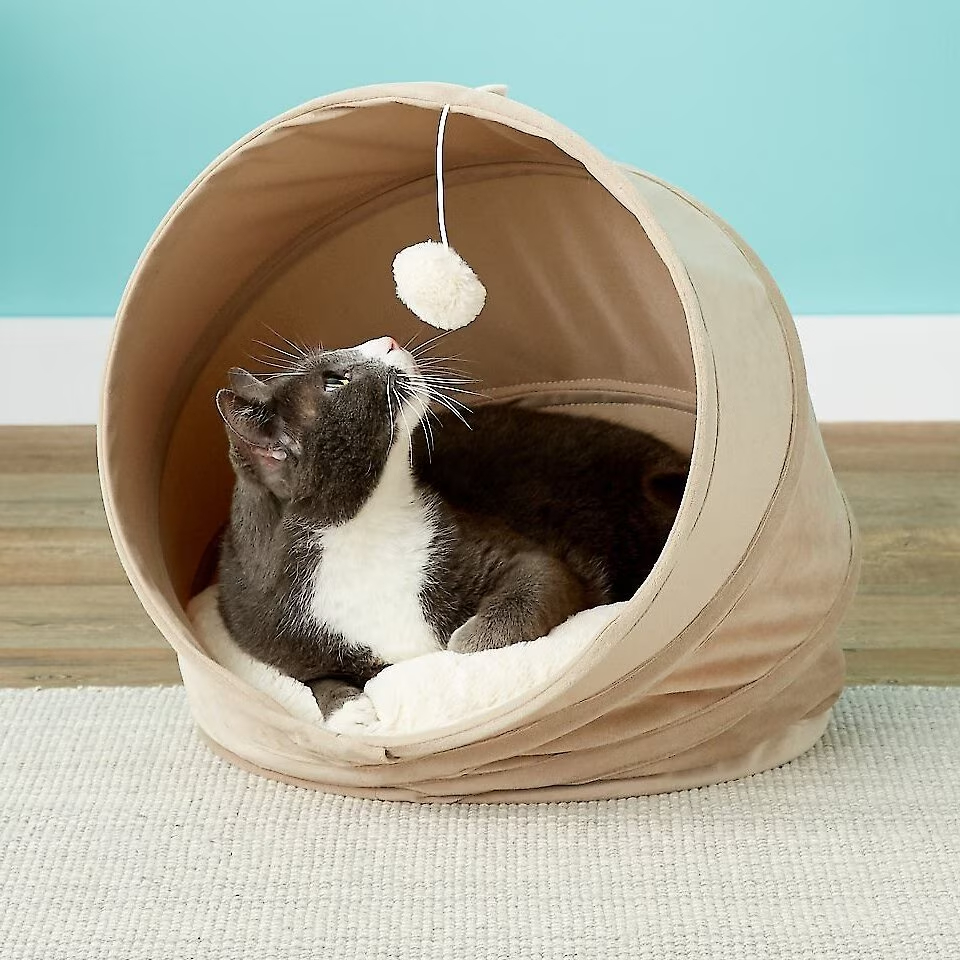
Entertainment and comfort combined into one, the Frisco Foldable Canopy Cat Bed is one of the best cat beds for the money. It’s not your average pet bed though, lying lifelessly on the floor. Instead, this bed has a pop-up canopy that can offer your cat some privacy, making their sleeping space cozier and more comfortable in the process.
One of the nice features of this bed is a small toy that hangs from the top of the canopy. Our cats seemed to love this little novelty, lying on their backs and pawing it to pass the time. Unfortunately, some of our cats seemed to think that it meant the whole bed was a toy and they used it as such, tossing it around and pulling out the pillow.
This cat canopy bed is very plush, and covered in ultra-soft fabric. The pillow is nicely cushioned and can be machine-washed to keep it clean. If you want to take your cat anywhere, this cat canopy bed folds flat so it’s easy to bring along, too. We just wish all of our cats knew it was a bed and not just a toy!
- The pull-over canopy provides shade and seclusion
- A soft toy hangs from the canopy top
- Made from super-soft fabric for ultimate cat comfort
- Folds flat for travel
- Some cats may think it’s a toy, not a bed
3. The Refined Feline Kitty Ball Cat Bed
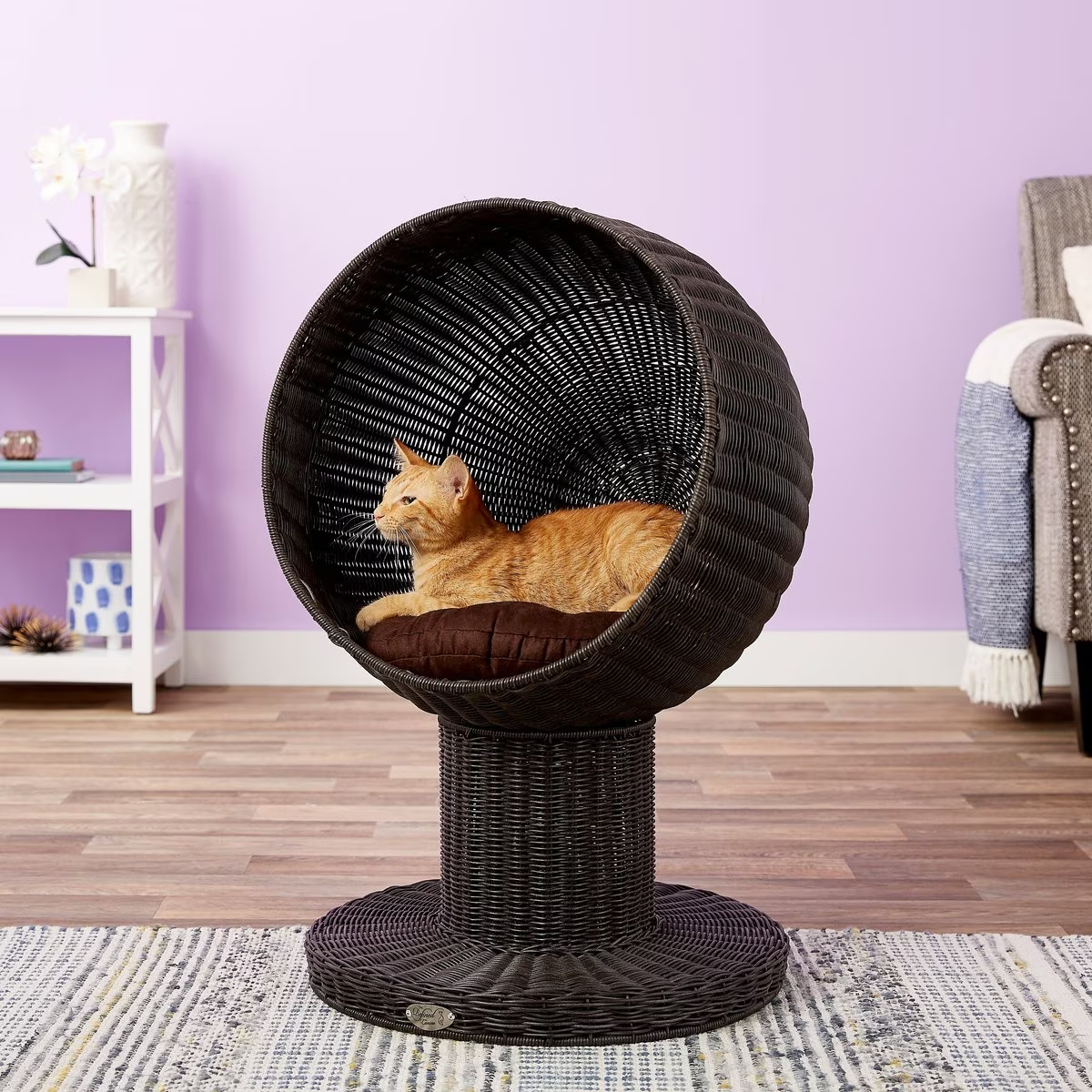
The name says it all; The Refined Feline Kitty Ball Cat Bed. This bed takes feline sleeping arrangements to new heights, literally. As many cats love to perch, this bed provides precisely what they want by elevating the bed up off the floor. Between that and the oversized 17-inch dome that offers plenty of space for your cat, this is a very large bed. Good thing it’s so elegant looking and will add to almost any setting!
This best designer cat bed is crafted from faux rattan that is non-toxic and extremely durable. It won’t break when clawed, so it’s perfect for cats. Included is a machine-washable cushion that’s very plush and comfortable so your furry feline will be cozy and clean in their perch. And thanks to the weighted base, it’s a great fit for cats of any size.
Of course, all of this extravagance works out to be a pretty pricey pet bed. But if you want to provide your cat with the ultimate luxury that will actually improve the look of your home rather than detract from it, then the Refined Feline Kitty Ball Cat Bed is a great, albeit expensive choice.
- Raised bed is preferable for cats who like to perch
- Looks elegant
- The 17-inch dome provides plenty of room
- Includes a comfortable, machine-washable cushion
- Several times the price of other cat beds
4. Meowfia Premium Felt Cat Cave Bed
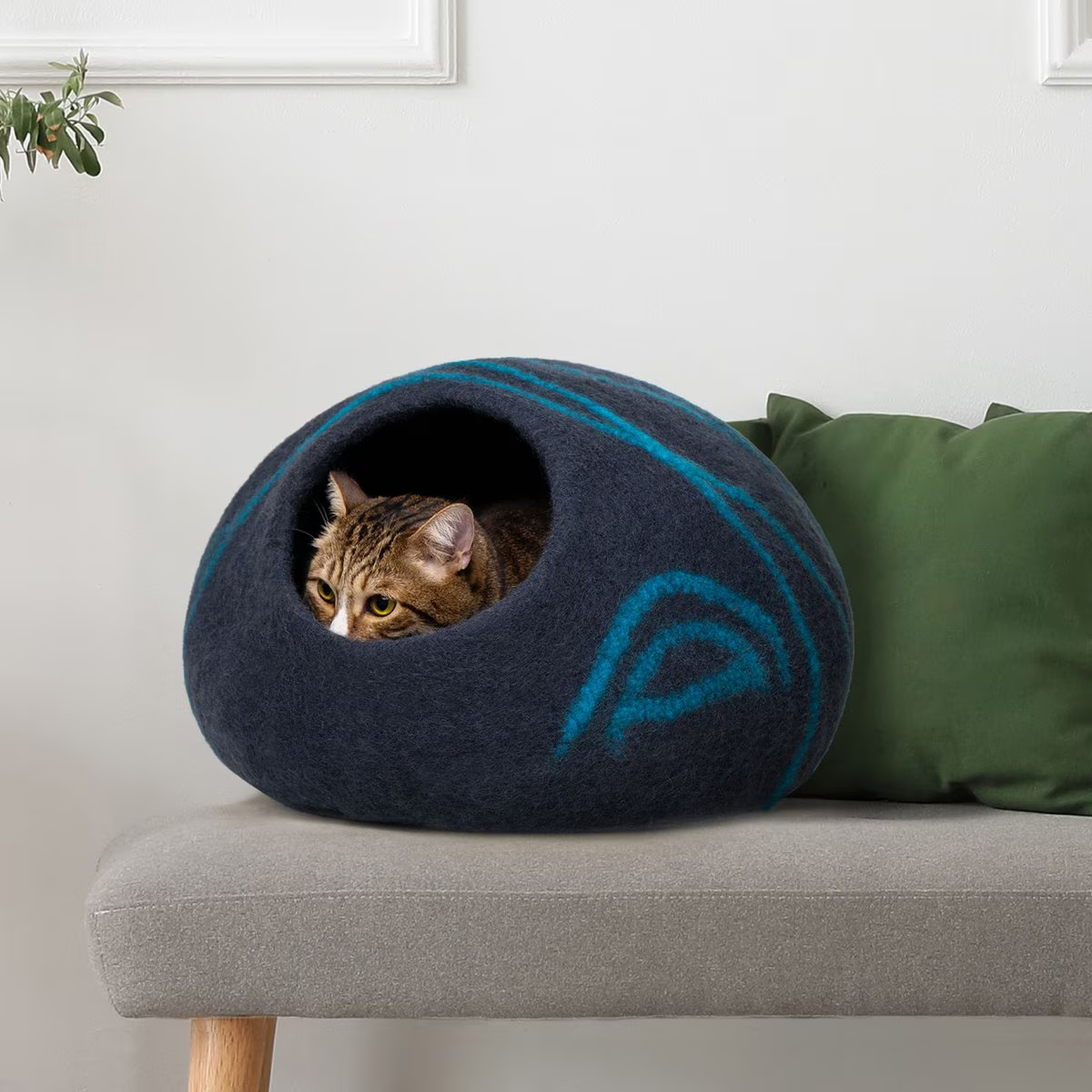
Popular with most of our felines, the Meowfia Premium Felt Cat Cave Bed isn’t a lay-on-top pet bed like most. Instead, this is more of a cave, as the name suggests. But it’s made from premium 100% Merino wool, which has some very interesting properties.
This bed will keep your cat cool in the summer and warm in the winter when it gets cold. Furthermore, it’s naturally antibacterial. Because of this, it will repel odor, dirt, and stains, minimizing the work you have to do to keep it clean and fresh. This is especially useful because the Meowfia Cat Cave bed can only be hand-washed, so you won’t want to wash it too often.
As a cave, this best cat pod bed has an 8-inch opening that can fit cats up to 20 pounds. If your cat doesn’t like to use it as intended, it can always be flattened out and laid on instead of in. You can easily pop it back out and return it to its proper shape.
It’s a great bed overall and most of our cats were fond of it, but our wallets weren’t. Despite their approval, we think this bed is overpriced for what you get.
- It’s made from one piece of fabric, with no seams or stitching
- Can fit cats up to 20 pounds
- Repels odor, dirt, and stains
- Can return to shape after being flattened
- Potentially overpriced for what you get
- Can only be hand-washed
5. Earthtone Solutions Cozy Wool Cat Cave Bed
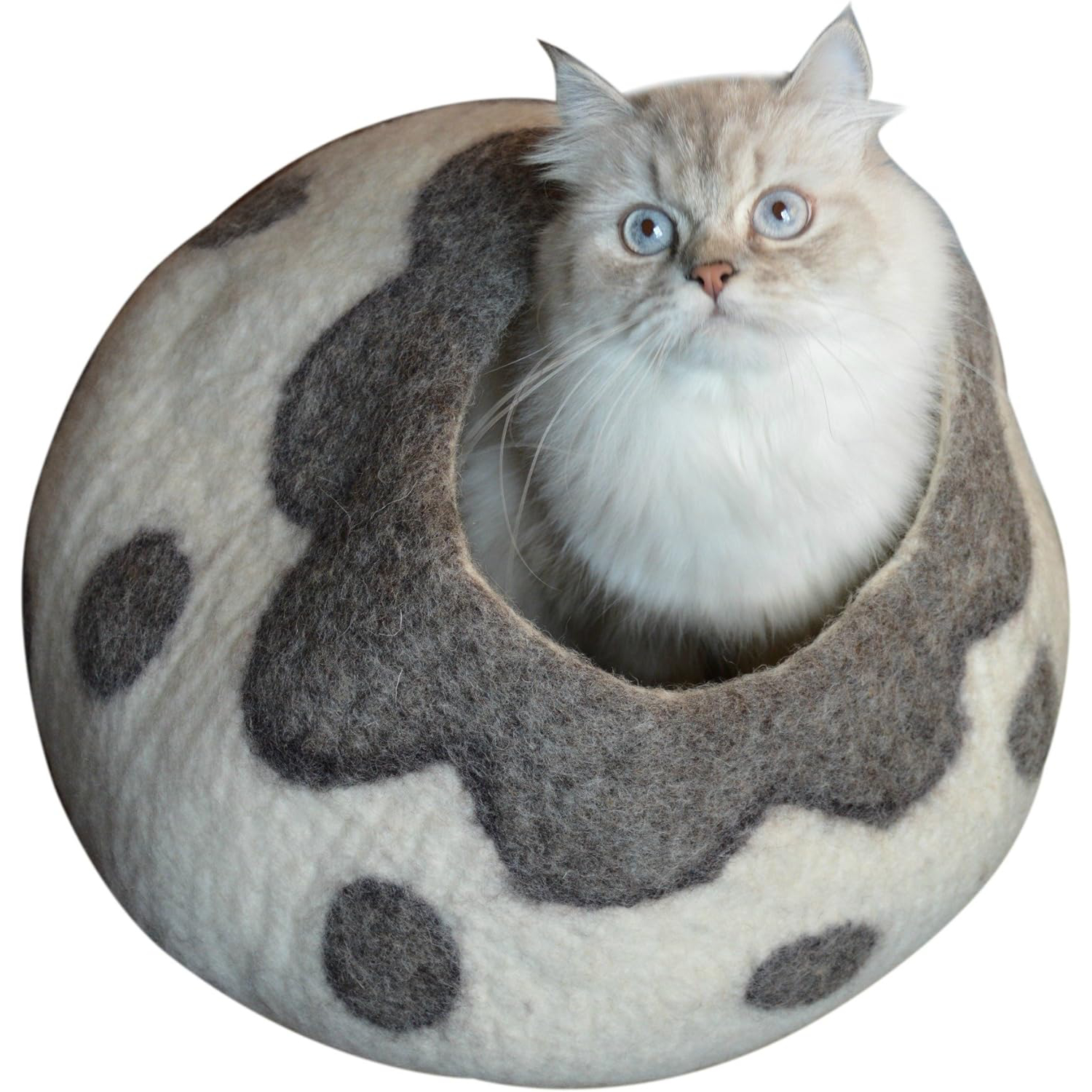
Similar to the Meowfia Cat Cave but even more expensive, the Earthtone Solutions Cozy Wool Cat Cave Bed is a great product that’s just too pricey for what you get. Still, cats seem to gravitate towards this bed, with only a sparse few rejecting it. Of course, that may have something to do with the catnip included free with the purchase of this cave bed.
If your cat prefers to lay on it instead of in it, then the Earthtone Solutions bed can easily be flattened to use it as a lounging mat. It will return to its original shape if desired so that it can once again be used as a cave. This makes it perfect for traveling since it can be folded up or rolled to save space.
The felted wool used to craft this best cat bed for anxiety will help keep your cat warm when it’s cold out and cool when it’s hot. They’ll get plenty of ventilation while still getting the privacy that most cats desire. But you can only hand wash it, so keep that in mind. Were it machine washable and affordable, this cave bed would likely be a top-three contender.
- Can be flattened to use as a lounging mat
- Durable wool will withstand claws
- Includes a packet of catnip
- It’s expensive
- Must be hand-washed
6. Aspen Pet Bolster Cat Bed
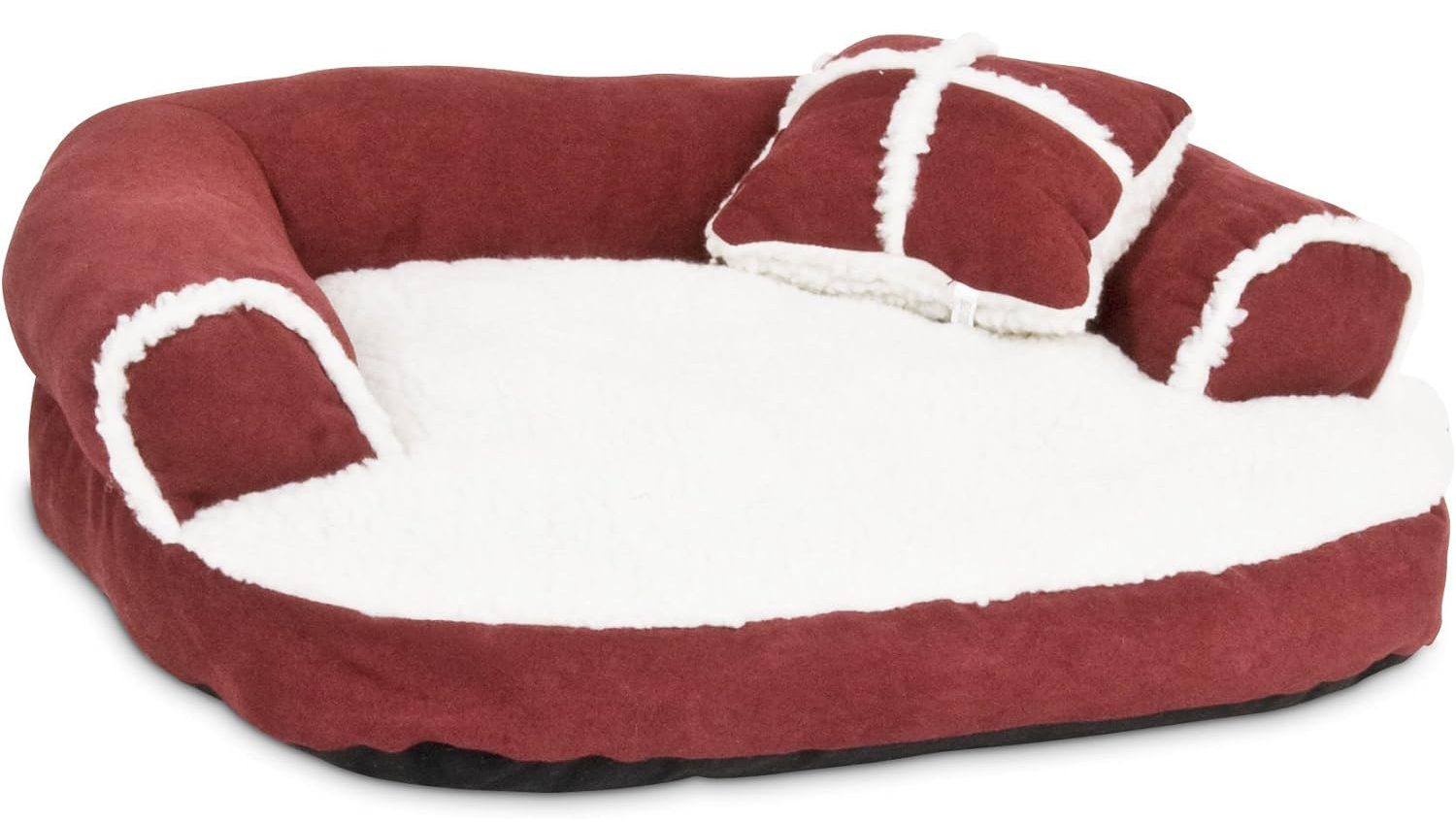
We all know that cats are very picky in every way, but most of our cats found something to like about the Aspen Pet Bolster Cat Bed. Between the plush top and the covering made from fleece and suede, it’s a very comfortable bed that our cats kept returning to. It’s also filled with 100% recycled fiber, helping it to be not just comfortable, but environmentally conscious as well.
We found plenty to like about it too. To start, it’s machine washable, so it’s easy to keep this bed clean and smelling fresh, keeping your house from developing any foul odors.
Priced affordably, we were happy with the cost of the product but weren’t so happy that we didn’t get to choose what color we get. It comes in several different colors, but you’ll receive one at random. Still, it’s attractive in any color, so it’s not a major complaint. Overall, the low cost and high comfort level of this bed are the reasons it made our list.
- Machine washable
- Ultra-comfortable plush top covered in fleece and suede
- Filled with 100% recycled fiber
- Affordably priced
- You don’t get to pick the color
7. Armarkat Burrow Cat Bed
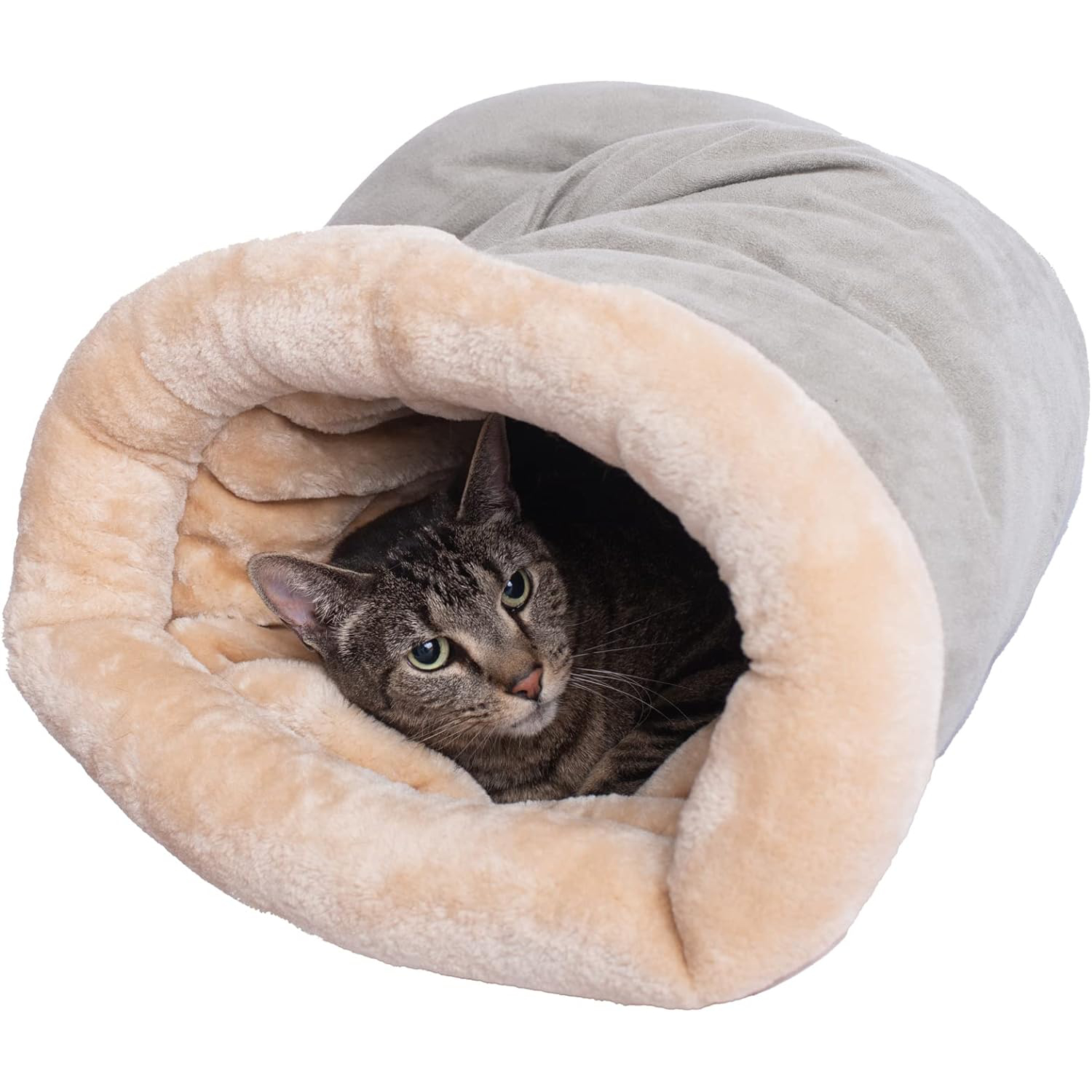
If you love to sleep cozy in a sleeping bag and want to give your cat the same feeling, then the Armarkat Burrow Cat Bed is the bed for you…er, your cat. Not all cats like to burrow though, so to speak. Many cats prefer to perch instead. But for the cats that are constantly wedging themselves into tight spaces and forcing themselves under your covers, the burrow bed may be just the thing to get them purring in pleasure. Luckily, you’ll know right away whether your cat likes it or not!
To make sure your furry friend is completely comfortable, this bed features faux suede and fur that’s extremely soft and pleasing to the touch. Plus, it’s filled with Poly-fil which makes it even plusher.
The base of this bed is anti-skid to keep it in place. It’s also waterproof to help keep any messes to a minimum. For easy cleaning, the whole thing is machine washable, making it easy to keep clean and fresh, and one of the best washable cat beds available.
- Faux suede and fur with Poly-fil for maximum comfort
- The base is waterproof and anti-skid
- Machine washable for easy cleaning
- Many cats will have no interest in this bed
- More expensive than other options
8. K&H Pet Products Thermo-Kitty Cat Bed
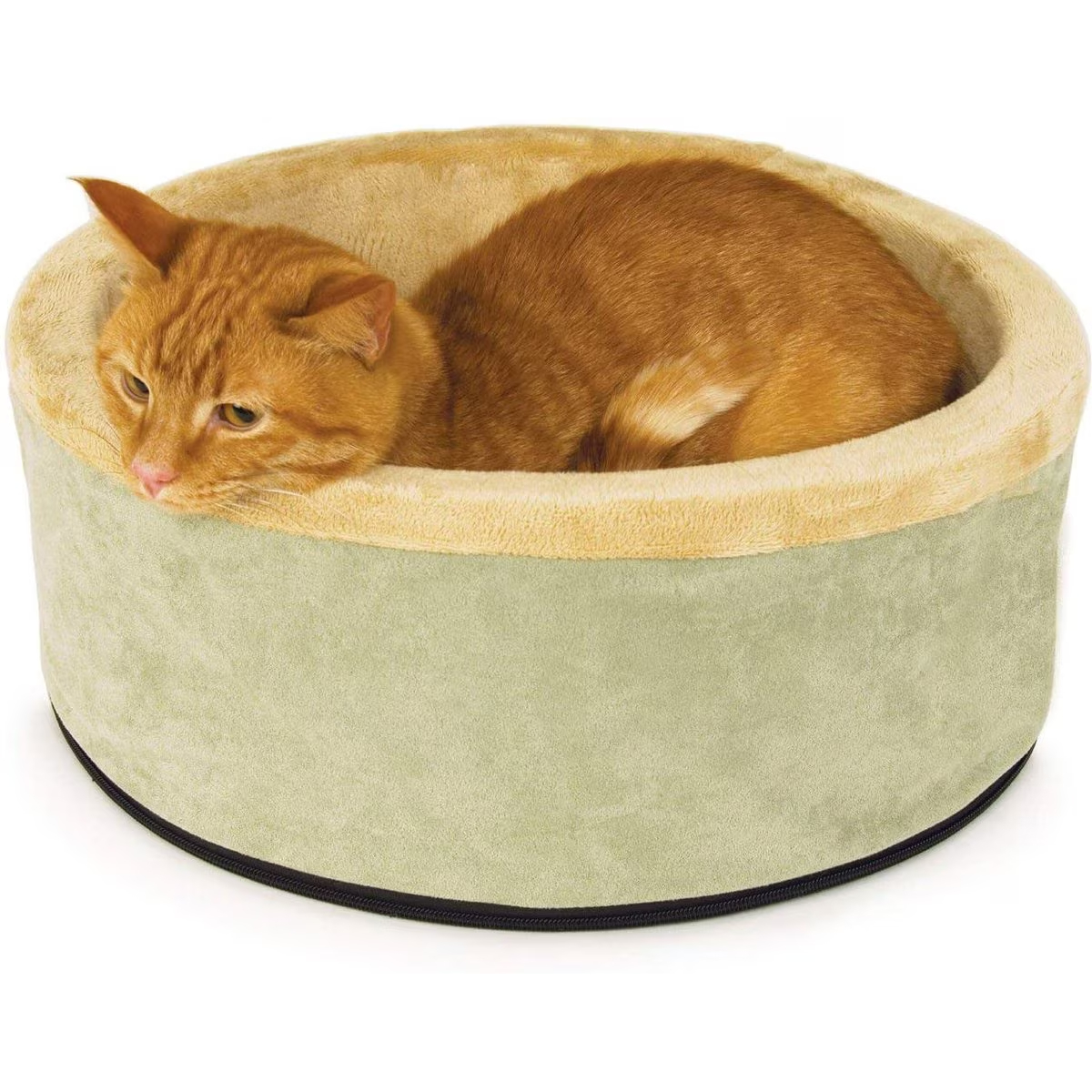
The K&H Pet Products Thermo-Kitty Cat Bed is an interesting and unique pet bed. It features a built-in heating unit that keeps the surface of the bed 10-15 degrees warmer than the ambient air temperature in the room.
We were worried that the built-in heater would hinder washing, but thankfully, the cover can be removed and machine-washed. It has a simple but attractive look, with neutral colors that will fit with most decor. But you’ll be stuck near an outlet because the power cord is only 5 feet.
There are two sizes of this bed available so any cat will find a comfortable fit. But the features that make this bed desirable also mean that it’s only good for indoor use. If you’re looking for a bed that can be used outdoors at any time, this isn’t it. And it’s very expensive. Granted, you’ll get some cool features for the price, but it’s a lot to spend on a cat bed.
- Built-in heating unit keeps your cat warm
- Two sizes available
- Removable, machine washable cover
- Expensive for a cat bed
- Indoor use only
9. Frisco Self-Warming Bolster Round Cat Bed
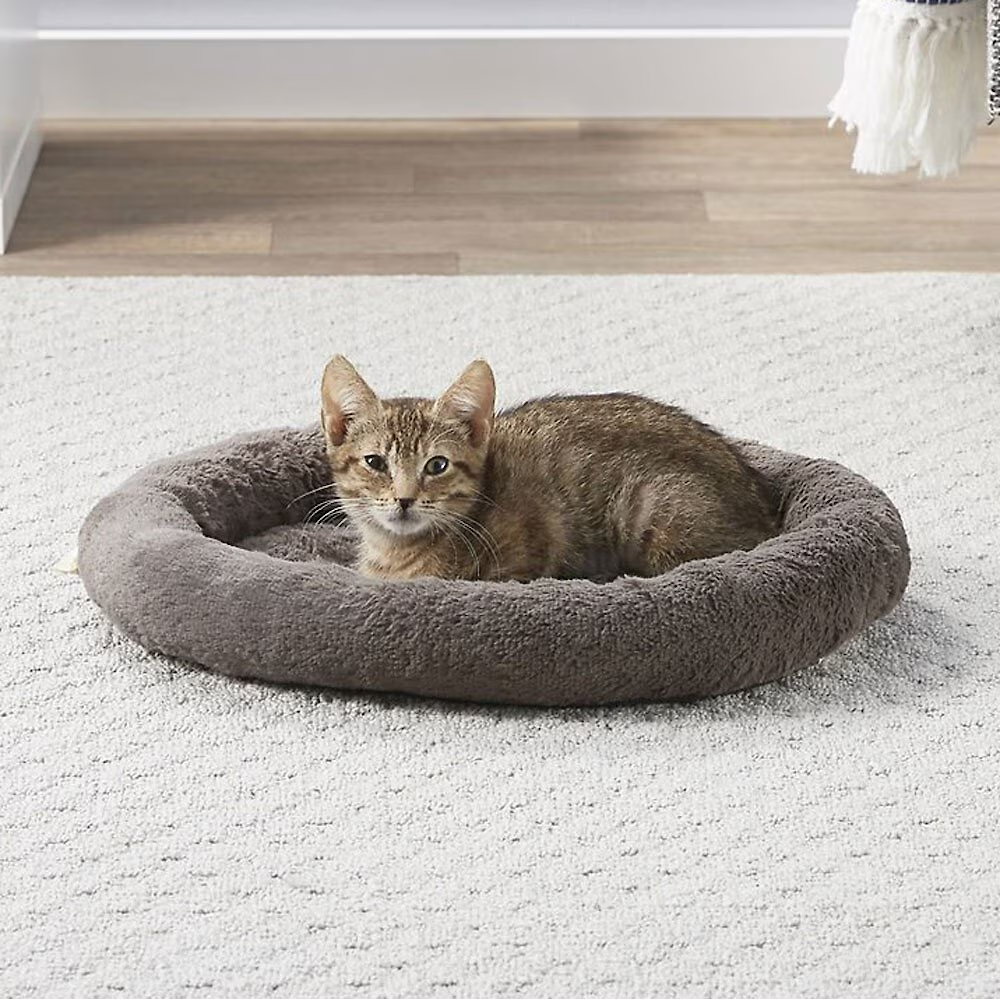
Basic and minimal are the two words we’d use to describe the Frisco Self-Warming Bolster Round Cat Bed. Unlike other warming beds that feature heaters, this one requires no cords because it’s self-warming. That means it reflects your cat’s body heat back on them so they can enjoy natural warmth. It may be warmer than some other pet beds, but according to reviews, it didn’t seem to make a significant difference in warmth for many cats.
This is a very thin bed, in a basic oval shape with a more padded ring to provide support around the outside. Many of our cats were put off by the lack of padding in the main part of the bed, but it is a good kitten bed. It’s very thin and doesn’t offer much support for adult cats. Not to mention the small size of the bed, which was considerably smaller than most others.
Despite the drawbacks, we still liked the affordable price of the Frisco cat bed.
- Radiates your cat’s body heat for natural warmth
- Affordably priced
- Much smaller than most others
- The bed is thin and not very comfortable
10. Catit Style Cuddle Cat Bed
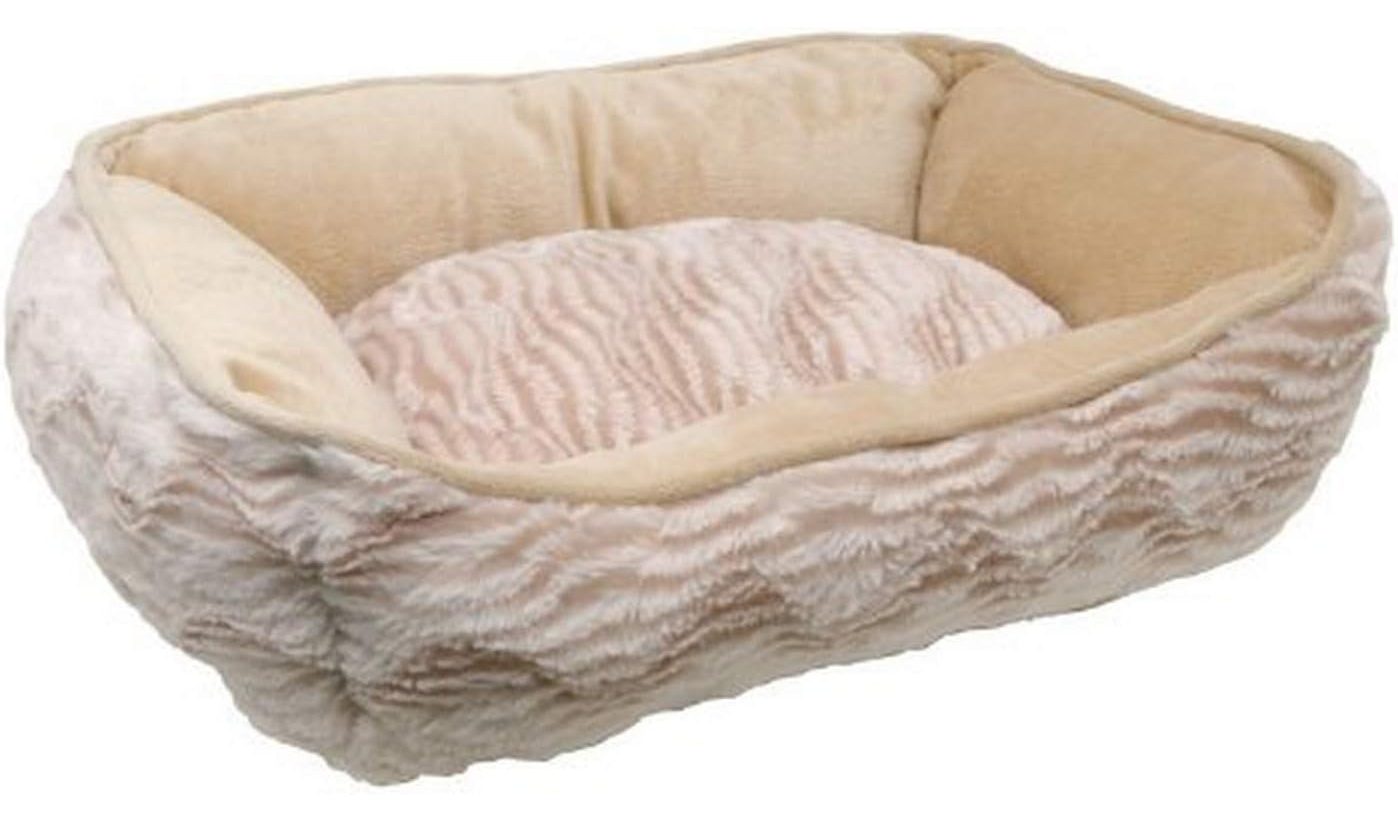
Available in three different colors for you to choose from, the Catit Style Cuddle Bed is an attractive pet bed. Its main feature is the reversible cover that has a warm and cool side. We love the concept, but it doesn’t seem to do much. Many customers weren’t able to notice any difference in temperature with the cover reversed, and their cats seemed indifferent either way.
We love products that offer us convenience, but the Catit Style Cuddle Bed fails in that department. It’s not machine washable and we’re just not fans of being forced to wash something by hand. When you consider that you’re paying much more for this bed than others, only to then be forced to invest time into repeatedly handwashing it, it becomes apparent that it’s not a great value overall.
- Reversible—warm and cool sides for different seasons
- Three colors to choose from
- Not machine washable
- More expensive than some other cat beds

Final Thoughts
It doesn’t matter how nice any particular cat bed seems to us. If our cats don’t agree, it’s not getting used.
We picked the Hepper Nest as the top choice. We liked the sleek design and how easy it was to keep clean and odor-free since its liner is machine washable and the outer shell is repellant.
For the best budget buy, we recommend the Frisco Foldable Canopy Cat Bed. It provides your cat with privacy and a play toy, keeping them comfortable and occupied. We liked that it folds flat, making it very easy to take with you when you travel.
Finally, the Refined Feline Kitty Ball Cat Bed is our third choice. This elegant pet bed is elevated for cats who love to perch, providing a 17-inch spacious dome for them to relax in. It’s comfortable for them and looks great in any home.
Quick Recap: Here is Our Favorite Bed For Cats
- HAPPY COZY CATS - Your kitty will bask in luxurious sherpa-lined comfort while feeling warm, safe,...
- MODERN DESIGN - Contemporary styling with upholstered fabric construction; just like your human...
- WARM FLEECE LINER - Self warming, thick sherpa fleece with microfiber trim.
At Catster, we’ve admired Hepper for many years, and decided to take a controlling ownership interest so that we could benefit from the outstanding products of this cool pet company!
See also:
- Purrfectiion Cat Bed Review: Pros, Cons & Verdict
- DIY Under Bed Blockers for Cats You Can Make Today (With Pictures)
Featured Image Credit: Hepper
Contents
- A Quick Look at Our Favorites in 2025
- The 10 Best Cat Beds
- 1. Hepper Nest Cat Bed – Best Overall
- 2. Frisco Foldable Canopy Cat Bed – Budget Buy
- 3. The Refined Feline Kitty Ball Cat Bed
- 4. Meowfia Premium Felt Cat Cave Bed
- 5. Earthtone Solutions Cozy Wool Cat Cave Bed
- 6. Aspen Pet Bolster Cat Bed
- 7. Armarkat Burrow Cat Bed
- 8. K&H Pet Products Thermo-Kitty Cat Bed
- 9. Frisco Self-Warming Bolster Round Cat Bed
- 10. Catit Style Cuddle Cat Bed
- Final Thoughts





